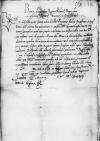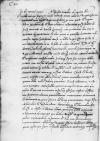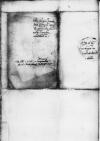Letter #761
Bona Sforza to Ioannes DANTISCUSCracow (Kraków), 1532-03-02
| received Regensburg, [1532]-04-25 Manuscript sources:
Auxiliary sources:
Prints:
| ||||||||||||
Text & apparatus & commentary Plain text Text & commentary Text & apparatus
ms 2 Reverendo in Christo Patri,
ms 1 [...]atri paper damaged⌈Reverendo in Christo Patrims 2 Reverendo in Christo Patri,
ms 1 [...]atri paper damaged⌉, domino
ms 1 [...]scopo paper damaged⌈Dantisco episcopoms 2 Dantisco episcopo,
ms 1 [...]scopo paper damaged⌉ Culmensi
ms 1 [...]m paper damaged⌈sacram caesareamms 2 sacram caesaream,
ms 1 [...]m paper damaged⌉ et catholicam maiestatem
ms 1 [...]untio paper damaged⌈regio et nostro nuntioms 2 regio et nostro nuntio,
ms 1 [...]untio paper damaged⌉ et oratori ms 2 sincere,
ms 1 [...] paper damaged⌈sincerems 2 sincere,
ms 1 [...] paper damaged⌉ nobis dilecto
Reverende in Christo Pater, sincere nobis dilecte.
Proximis diebus scripsimus S(trenuita)ti or S(incerita)ti⌈S(trenuita)tiS(trenuita)ti or S(incerita)ti⌉
Tuae latam esse contra nos sententiam in
Copia
In Dei nomine, amen.  BCz, 3465, p. 221
in sua possessione pasculandi animalia regiae curiae in dicta defensa Sancti Laurencii cum iuribus et pertinentiis suis, neutram partium in expensis condemnantes ex causa, hanc eandem nostram definitivam sententiam taliter in his scriptis proferentes notatis.
BCz, 3465, p. 221
in sua possessione pasculandi animalia regiae curiae in dicta defensa Sancti Laurencii cum iuribus et pertinentiis suis, neutram partium in expensis condemnantes ex causa, hanc eandem nostram definitivam sententiam taliter in his scriptis proferentes notatis.
Lecta, lata et recitata fuit praesens sententia die XVI mensis Ianuarii 1532.
Copia sententiae de



